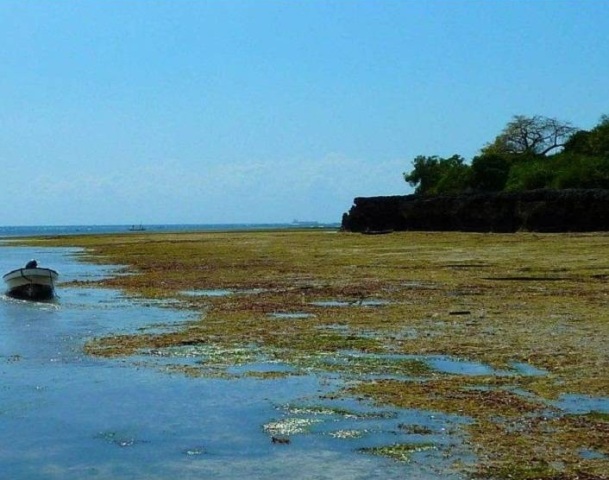There is more to Tanzania than just its idyllic beaches, exotic wildlife and ancient ruins. Read on to know some interesting and fun facts about the African paradise called Tanzania.
Facts About Tanzania
Home to Africa’s most alluring tourist hot spots, the wild and exotic country of Tanzania is located on the east coast of Africa, to the south of the equator. Surrounded by the Indian Ocean, the idyllic landscape of Tanzania shares its boundary with other African countries like Kenya, Rwanda, Uganda, Burundi, Zambia, Mozambique and Congo. This unitary republic comprising of 26 mikoas boasts of an approximate population of 30 million. Roughly two-thirds of the population comprises of the local population of which one-third is made up of Muslims, Christians and other indigenous religious groups. Regarded as the cradle for the earliest evidence of human life on earth, Tanzania is one of the world’s oldest inhabited areas and has been a constant source of interest for archeologists. Tanzanian economy is primarily an agricultural one although tourism and export sums up as other important revenue sources for the country. The low-key nation of Tanzania has remained unaffected by political upheaval and tribal rivalries that has helped it to retain much of its original essence. Nevertheless, its dependency and passive resignation to capitalistic powers have hindered Tanzania from rising on the economic charts and thus today the country remains one of the poorest in the world.

Image: Frontierofficial@flickr
Interesting And Fun Facts About Tanzania
- Mt. Kilimanjaro, which is the tallest African peak, is located in Tanzania.
- The newly declared capital of Tanzania is Dodoma.
- Sadly, one out of every ten people in Tanzania is affected with HIV/AIDS.
- The official language of Tanzania is Swahili. Swahili is a Bantu language that is primarily prevalent in the East African Coastal region.
- Tanzania is the largest country on the East African Coast.
- Tanzania is one of the poorest countries in the world.
- Tanzania is home to exotic wildlife like black rhinos, the Kori bustard, baboons, wart hogs, elephants, zebras and more.
- About 33% of the Tanzanian population is illiterate.
- Tanzania is surrounded by three of the world’s most magnificent lakes - Lake Tanganyika, Lake Nyasa and Lake Victoria.
- April 26 is celebrated as Union Day in Tanzania to commemorate the independence of Tanganyika and Zanzibar.
- The name Tanzania is a portmanteau of Tanganyika and Zanzibar which were one nation before they separated into Tanzania and the semi-autonomous part of Zanzibar in 1964. Tanganyika means “sail in wilderness” and Zanzibar connotes “fair is this island”.
- The earliest remains of humans including the legendary 2 million years old Homo habilis was recovered in Olduvai Gorge in Tanzania.
- The extinct Ngorongoro Crater, in Tanzania, is the largest complete crater in the world.
- Tanzania has more than a 100 different tribal groups.
- Lake Manyara National Park, in Tanzania, is home to the world’s only tree-climbing lions.
- Lake Tanganyika in western Tanzania is the world's second deepest lake.
- Tanzania is famous for its African blackwood or mbingo carvings.
- The Amani Nature Reserve in eastern Tanzania is the only place on the entire planet where African Violets really grow in the wild.
- The Coconut Crab found on Chumbe Island of Zanzibar (the semi-autonomous region of Tanzania) is the largest crab in the world.
- The short rainy season of Tanzania is called Vuli while the long rainy season is called Masika.
- Tanzanian economy is largely an agricultural one with its primary cash crops being coffee, cotton, sisal and tea.
- Dar es Salaam, the current economic and political hub of the country, was also the old capital of Tanzania.
- Tingatinga and Makonde are two popular forms of African paintings popular in Tanzania.
See also
More from iloveindia.com
- Home Remedies | Ayurveda | Vastu | Yoga | Feng Shui | Tattoos | Fitness | Garden | Nutrition | Parenting | Bikes | Cars | Baby Care | Indian Weddings | Festivals | Party ideas | Horoscope 2015 | Pets | Finance | Figures of Speech | Hotels in India : Delhi | Hyderabad | Chennai | Mumbai | Kolkata | Bangalore | Ahmedabad | Jaipur
- Contact Us Careers Disclaimer Privacy Policy Advertise With Us Lifestyle Sitemap Copyright iloveindia.com. All Rights Reserved.







